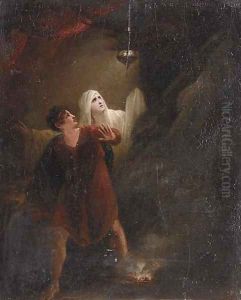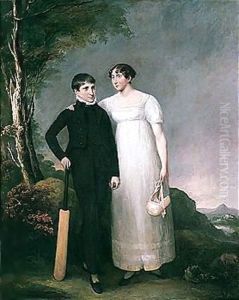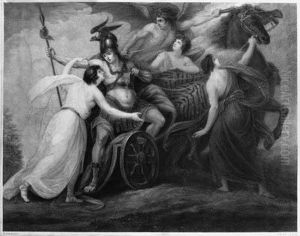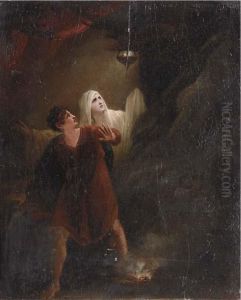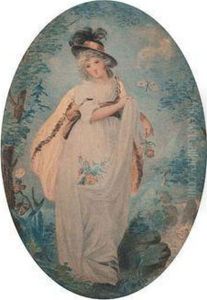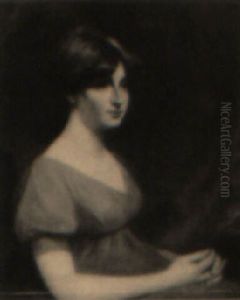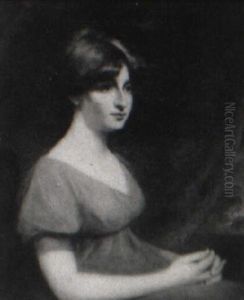William Artaud Paintings
William Artaud was an English painter active during the late 18th and early 19th centuries, primarily known for his contributions to portrait and historical painting. Born in 1763, Artaud's artistic journey began in an era defined by significant political, social, and cultural shifts both in Britain and across the globe. Despite the lack of extensive documentation on his early life, it is known that Artaud developed his skills in an environment rich with the influences of Neoclassicism, a movement that sought to emulate the art and architecture of ancient Greece and Rome.
Artaud's career took a significant step forward when he became a student at the Royal Academy Schools in London, a prestigious institution that played a crucial role in the development of many artists of the period. During his time at the Academy, Artaud would have been exposed to the leading artistic figures and ideas of his time, honing his craft under the guidance of established masters. His works, particularly his portraits, were noted for their detailed execution and the ability to capture the essence of his subjects, a testament to his skills and the classical influences that informed his style.
Despite the recognition he received for his portraits, Artaud also ventured into the realm of historical painting, a genre that was highly regarded in his era. These works often depicted scenes from history, mythology, or literature, requiring a deep understanding of the subject matter and a capacity to convey complex narratives through visual means. While not as widely remembered today as some of his contemporaries, Artaud's contributions to this genre demonstrate his versatility and commitment to the ideals of Neoclassicism.
William Artaud's career reflects the broader trends and transformations of the British art world during a period of transition from the ornate Rococo to the more sober Neoclassicism. His works, preserved in various collections, continue to offer insights into the aesthetic and cultural values of his time. Artaud passed away in 1823, leaving behind a body of work that, while perhaps not as celebrated as that of some of his peers, remains a valuable part of the history of English art.
